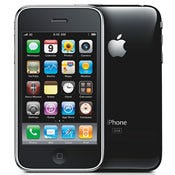The 3.0 software and iPhone 3GS offer incremental improvements for corporate deployments, but experts note some key elements are still missing.


(click image for larger view)
Apple iPhone 3GS
The new iPhone 3GS and iPhones with the 3.0 software will inevitably find their way into the hands of enterprise workers, but are the devices secure enough for corporate networks?
Mobile security experts told InformationWeek that the 3.0 software is a significant improvement for the platform, but it still may fall short in some categories. Regardless, the popularity of the device means many IT departments will have to make tough choices.
While many of the new features for the 3.0 software and the iPhone 3GS have been available on competing platforms for years, the feature list isn't as important as how well these are implemented, according to Jason Lackey, marketing manager with InnoPath.
"A lot of folks are concerned about feature lists, and they put checkmarks next to a long list of options but no one cares about how they're implemented or if the end user benefits from it," said Lackey. "Apple has shown they know how to bake in these features, and bake them in right."
Lackey sees the improved capabilities of the 3.0 software and the decreased price of the iPhone 3G as a catalyst for wider adoption in the enterprise environment. One of the most appealing new features of the software for the mobile professional is the ability to use the iPhone as a wireless modem for computers or laptops. Apple said the ability to tether will be seamless, and can be done over a USB cable or with Bluetooth. The company said it had 42 carriers that would support this at launch, but AT&T will not be one of them. The second-largest U.S. carrier said it definitely would offer iPhone tethering, but a date and price will be announced at a later time.
Another new feature will help users who misplace their phones often, as MobileMe users will be able to see where their phone is on a map. With the "Find My iPhone" service, users can send a message or alert to the misplaced device that will play even if the smartphone is in silent mode. If the device appears to be unrecoverable, users can remotely wipe it from afar. The wiping can be undone if the user recovers the device as well.
Road warriors know that one major hole in the platform is the lack of turn-by-turn navigation, but that will soon be fixed with the next version of the software. TomTom demonstrated a turn-by-turn navigation application, as well as a car-kit accessory that makes use of the new access third-party developers have to the iPhone's docking port.
But not everyone is convinced that the iPhone is ready for prime time in the enterprise market, as Apple is still the only conduit for new features like the recently-announced hardware data encryption. Some IT departments may still be wary of having to use iTunes for control and management of enterprise iPhones, said Dan Hoffman, CTO of SMobile Systems. While Hoffman is encouraged by features like remote wipe and the phone locator service, he said the lack of antivirus and firewall make iPhones not as secure as rival platforms like BlackBerry, Windows Mobile, and Symbian.
"Apple's basically telling the enterprise market, 'We're going to give you almost nothing, and we're going to give it to you how we want to,'" said Hoffman. "You're at the mercy of Apple to improve the security because they refuse to open it up to a free market solution."
Hoffman said he expects the lower price and the new bells and whistles of the iPhone 3GS version will lead to more employees purchasing the handset for personal use. These workers will also put more pressure on their IT departments to allow the iPhone on the corporate network.
"One of two things is going to happen: enterprises are going to continue to push back and stick with security standards they've established for 30 years, or they're going to change their standards," said Hoffman.
The 3.0 software will be available to the public June 17, and it will be free to iPhone users and cost $9.99 for iPod Touch users. Official iPhone developers can get access to it today from Apple's developer Web site. The iPhone 3GS will go on sale in the U.S. market June 19, and it will cost $199 for the 16 GB model, and $299 for the 32 GB model with a new two-year contract with AT&T.
The iPhone may be your next full-function computer. InformationWeek has published an independent analysis of this topic. Download the report here (registration required).
About the Author(s)
You May Also Like





